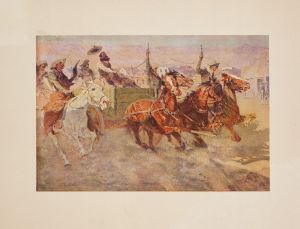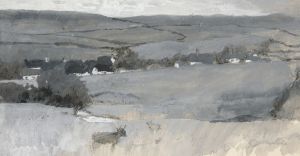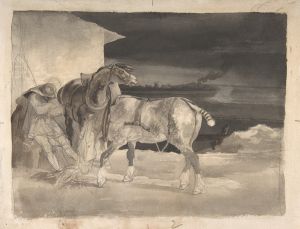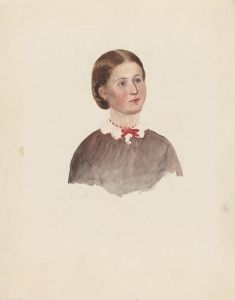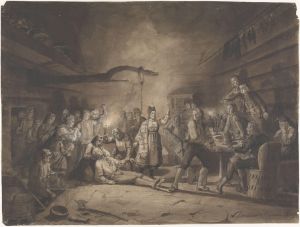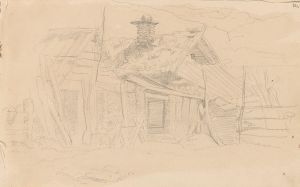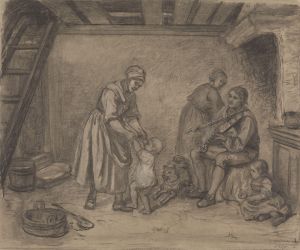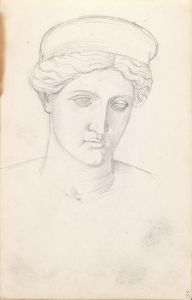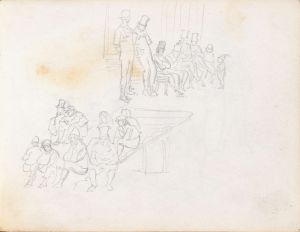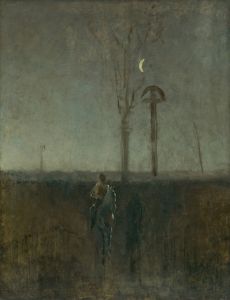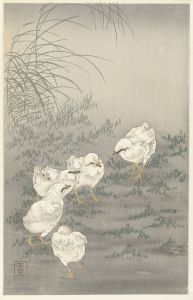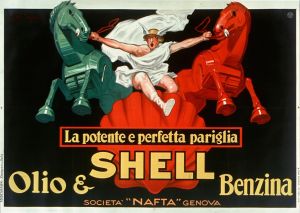
A Dun Horse
A hand-painted replica of Adolph Tidemand’s masterpiece A Dun Horse, meticulously crafted by professional artists to capture the true essence of the original. Each piece is created with museum-quality canvas and rare mineral pigments, carefully painted by experienced artists with delicate brushstrokes and rich, layered colors to perfectly recreate the texture of the original artwork. Unlike machine-printed reproductions, this hand-painted version brings the painting to life, infused with the artist’s emotions and skill in every stroke. Whether for personal collection or home decoration, it instantly elevates the artistic atmosphere of any space.
A Dun Horse by Adolph Tidemand is a painting that exemplifies the work of the renowned Norwegian artist, who is best known for his depictions of rural life and traditional Norwegian culture. Adolph Tidemand (1814–1876) was a prominent figure in the 19th-century Norwegian art scene and played a significant role in the development of national romanticism in Norway. His works often focused on the everyday lives of Norwegian people, capturing the essence of their culture and traditions.
While specific details about the painting A Dun Horse are limited, it is important to understand Tidemand's broader artistic context to appreciate this work. Tidemand studied at the Academy of Art in Copenhagen and later at the Kunstakademie Düsseldorf, where he was influenced by the Düsseldorf school of painting. This movement emphasized detailed realism and often featured historical and genre scenes, which is evident in Tidemand's body of work.
Tidemand's paintings are characterized by their meticulous attention to detail and their ability to convey the mood and atmosphere of the scenes he depicted. He often traveled throughout Norway, sketching and gathering material for his paintings, which allowed him to create authentic and vivid representations of Norwegian life. His works frequently featured rural landscapes, traditional costumes, and scenes of everyday activities, reflecting his deep appreciation for Norwegian culture and heritage.
Although A Dun Horse is not as widely documented as some of Tidemand's other works, such as Bridal Procession on the Hardangerfjord or Haugianerne, it likely shares similar thematic elements. Horses were an integral part of rural Norwegian life during Tidemand's time, used for transportation, farming, and other daily tasks. As such, a painting featuring a horse would align with Tidemand's interest in portraying the realities of rural existence.
Tidemand's contribution to Norwegian art extends beyond his paintings. He was instrumental in fostering a sense of national identity through art, particularly during a time when Norway was seeking to assert its cultural independence. His works were celebrated for their ability to evoke a sense of nostalgia and pride in Norwegian traditions, and they continue to be appreciated for their historical and cultural significance.
In summary, while specific information about A Dun Horse by Adolph Tidemand is scarce, understanding Tidemand's artistic style and thematic focus provides insight into what the painting might represent. As a key figure in Norwegian national romanticism, Tidemand's work remains an important part of Norway's cultural heritage, capturing the spirit and essence of 19th-century Norwegian life.





